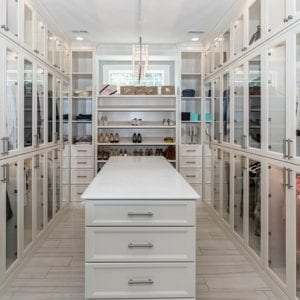8 Surprising Things That Can Trigger Allergies in the Winter
Ever wonder why your so-called “seasonal” allergies seem to linger on in the colder months? You might be allergic to more than just pollen. The air inside our homes is full of microscopic particles, many of which can trigger allergy symptoms throughout the year.
These are the facts on winter allergies: how to tell allergies apart from a cold, what causes them, and how to keep your home as allergen-free as possible this holiday.
Is It Allergies or a Cold?
According to the American College of Allergy, Asthma and Immunology (ACAAI), two-thirds of allergy sufferers have year-round allergy symptoms in addition to seasonal pollen allergies. If you’re prone to summer allergies, you are likely to experience symptoms in the winter as well.
However, many people don’t recognize the potential allergy triggers that roll in each year with the winter weather.
That’s because people tend to attribute their winter allergy symptoms to the cold virus. When you wake up in December with a sore throat and a runny nose, a cold is the first thing that comes to mind – not allergies.
According to Web MD and Harvard Medical School, the biggest clue that you’re dealing with allergies instead of a cold is how long the symptoms last. Cold symptoms are often at their worst in the first few days, but mostly taper off after a week; allergy symptoms, on the other hand, can persist for weeks on end with little to no change.
What Causes Allergies in the Winter?
When the temperature drops, most of us start spending a lot more time indoors, increasing our exposure to indoor air pollution and airborne allergens.
Some of these triggers are present in the home year-round; others are more common in the winter, especially around the holidays. It might surprise you to learn how certain holiday traditions can contribute to poor indoor air quality and trigger coughing, sneezing and other allergy symptoms.
The prominent winter allergy triggers and irritants include:
- Wood smoke
- Scented candles
- Fresh-cut trees and boughs
- Holiday decorations
- Airborne dust
- Mold and mildew
- Pet dander
- Dry air
1. Wood Smoke
Not everyone enjoys a roaring fireplace. Although wood smoke is not a sole cause of allergies, it can irritate the lungs and worsen the impact of other symptoms. If someone in your family has allergies or asthma, consider gathering around a gas fireplace instead of a wood fire (it’s just as cozy and safer to boot.)
2. Scented Candles
Scented candles, aerosols and potpourri can contain tiny particles and volatile organic compounds (VOCs) that trigger allergy symptoms. Save your real candles for special traditions and decorate with flameless candles around the house.
3. Freshly-Cut Trees and Boughs
Few people are allergic to evergreen trees, though some do react to the terpenes that give trees their pine-fresh scent. The trouble with Christmas trees is their tendency to harbour mold spores. The longer it sits outside, the more likely freshly-cut wood is to attract mold.
4. Holiday Decorations
As for artificial trees? Depending on how you store them, these and other decorations can become the source of another common allergy trigger: dust mites. To avoid this, seal your festive décor in a closed storage box during the off-months.
5. Mold and Mildew
Fallen leaves and other yard debris are a haven for mold, which can hitchhike into your home on the soles of your boots. Make a habit of wiping your shoes on a mat outside the door until the ground is covered by snow.
6. Pet Dander
Pets usually spend more time indoors in the winter, too, leading to more pet dander particles in the air. High-efficiency particulate air (HEPA) filtration can help to reduce the levels of these allergens present inside your home.
7. Airborne Dust
When you fire up the furnace for the first time in a while, it can stir up dust that has settled in your central heating ducts. Having your air ducts cleaned professionally every few years can help reduce the volume of dust circulating in your home’s air.
8. Dry Air
Turning up the heat can make the winter air even drier. Low humidity causes your throat and nose to become more prone to irritation, increasing your sensitivity to airborne allergens. Living in a house with very dry air can even increase the odds of getting sick.
If the humidity in your home drops below 35% (check your thermostat display or use a hygrometer to find out), you can install a furnace humidifier to regulate it.
Create a Comfortable Home for the Holidays
Indoor air quality is key to your family’s comfort throughout the year. Browse our selection of ventilators, humidifiers and air purification filters designed to keep your indoor air fresh and clean – or contact us to discuss how we can help your family breathe easier this winter.








